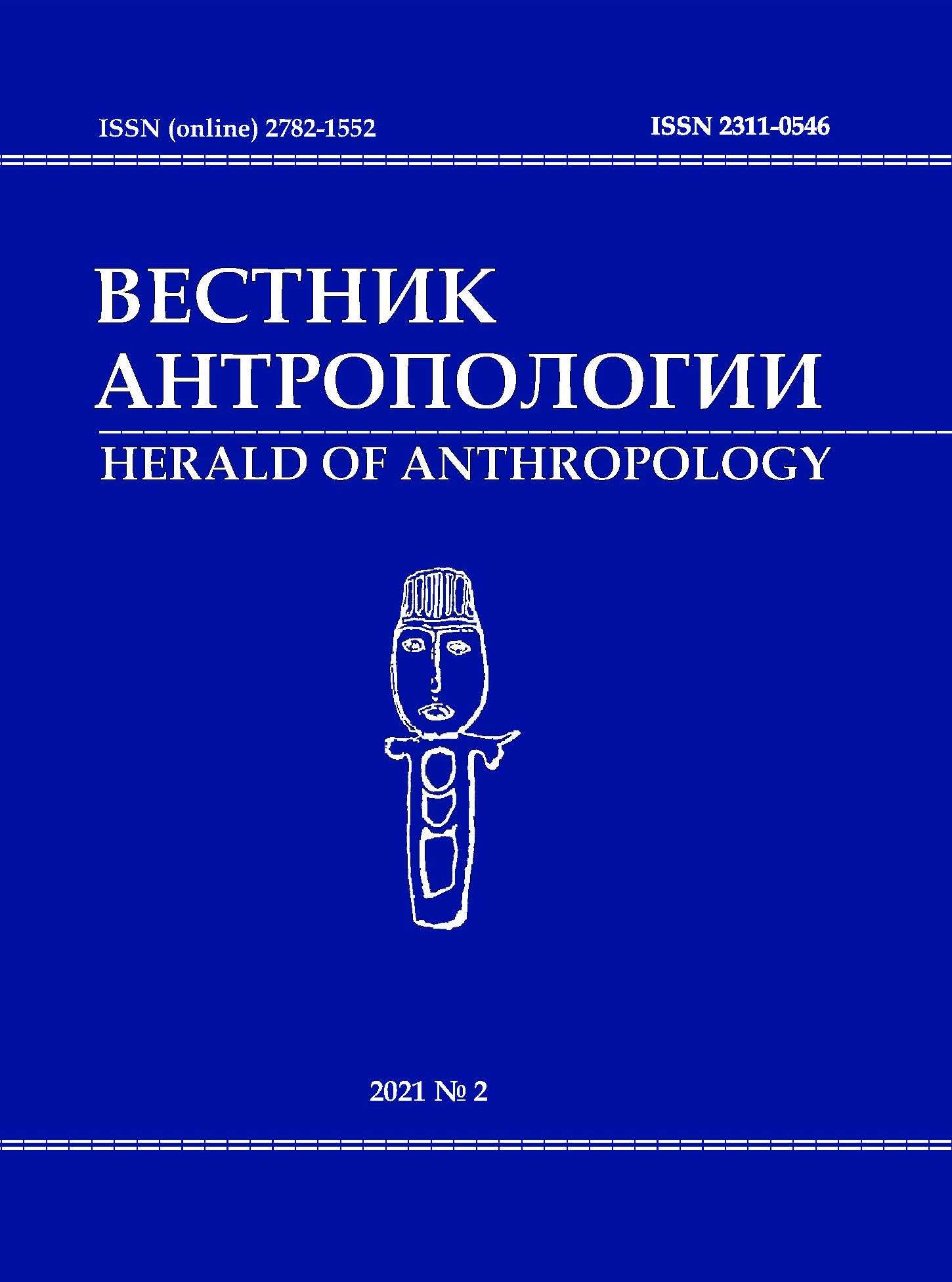Voicing the move: discursive practices of scottish dance instruction
DOI: 10.33876/2311-0546/2021-54-2/177-197
Keywords:
pedagogic discourse, dance instruction, teacher-student power relations, traditional dance, Scottish country dancing, Highland dancing, ethnolinguistics, ethnochoreology, dance phenomenologyAbstract
Bridging dance anthropology and multimodal discourse analysis, the article focuses on language used to teach and/or describe various versions of the pas de basque step in Highland, Scottish country, Scottish step and “called” Ceilidh dancing of Scotland. It analyses pedagogic discourse observed during on- and offline classes and dance events across the globe alongside the author’s own embodied experience as a Scottish dancer, learner and teacher.
When examining culturally and somatically contextualised uses of English in Scottish dance pedagogy, the article takes into account a range of dance manuals and instructions published between 1950 and 2020 by the Royal Scottish Country Dance Society, the Royal Scottish Official Board of Highland Dancing, the United Kingdom Alliance of Professional Teachers of Dancing and other organisations and individuals.
Revisiting issues of communicating (and delegating) authority, (re)shaping the dance tradition(s) and providing/refraining from regulation, the study is aimed at helping to better appreciate the mutual interconnectedness between pedagogic discourse, on the one hand, and dance learning and teaching as an embodied social and cultural experience, on the other.
For Citation: Alferov, S.V. 2021. Voicing the move: discursive practices of scottish dance instruction. Herald of Anthropology (Vestnik Antropologii) 2: 177–197.
References
- Alferov, S. 2019b. “Estestvennost'” v shotlandskom tantse s pozitsii etnolingvistiki [“Naturalness” in Scottish dancing: An ethnolinguistic perspective]. Vestnik Antropologii 47.3: 169-188. DOI: 10.33876/2311-0546/2019-47-3/169-188.
- Bernstein, B. 1990. The Structuring of pedagogic discourse. Vol. IV: class, codes and control. London and New York: Routledge.
- Blommaert, J., and C. Bulcaen. 2000. Critical discourse analysis. Annual Review of Anthropology 29: 447-466.
- Cameron, D., and I. Panović. 2014. Working with the written discourse. Los Angeles, London and New Dehli: Sage.
- Christie, F. 2002. Classroom discourse analysis: a functional perspective. London and New York: Continuum.
- Daly, J.A., and A.L. Vangelisti. 2003. Skillfully instructing learners: How communicators effectively convey messages. In Handbook of communication and social interaction skills, edited by J.O. Greene and B.R. Burleson. Manwah and London: Lawrence Erlbaum Associates. 871-908.
- Ellsworth, E. 1989. Why doesn’t this feel empowering? Working through the repressive myths of critical pedagogy. Harvard Educational Review 59.3: 297-324.
- Fairclough, N. 2004. Semiotic aspects of social transformation and learning. In An Introduction to critical discourse analysis in education, edited by R. Rogers. Mahwah, New Jersey and London: Lawrence Erlbaum Associates. 223-235. DOI: 10.1075/z.184.77fai
- Foucault, M. (1982) 1994. Le sujet et le pouvoir. In Foucault M. Dits et écrits. Vol IV, 222-243. Paris: Gallimard.
- Franko, M. 2019. Archaeological choreographic practices: Foucault and Forsythe. In Choreographing discourses: A Mark Franko reader, edited by M. Franko with A. Nicifero, 81-95. London and New York: Routledge.
- Green, J. 2002-03. Foucault and the training of docile bodies in dance education. Arts and Learning 19.1:99-126.
- Havis, D.N. 2014. Discipline. In The Cambridge Foucault lexicon, edited by L. Lawlord and J. Nale, 110-119. Cambridge: Cambridge University Press.
- Jary M, and M. Kissine. 2016. When terminology matters: The imperative as a comparative concept. Linguistics 54.1: 119-148. DOI: 10.1515/ling-2015-0039.
- Keevallik, L. 2013. Decomposing movement: Spatial deixis in dance instruction. In Interaction and Mobility: Language and the Body in Motion, edited by P. Haddington, L. Mondada, and M. Nevile, 347-372. Berlin and Boston: DeGruyter.
- Keevallik, L. 2015. Coordinating the temporalities of talk and dance. In Temporality in Interaction, edited by A. Deppermann and S. Günthner, 309-336. Amsterdam: John Benjamins Publishing. DOI: 10.1075/slsi.27.10kee.
- Kerr-Berry, J., K. Clemente, and D. Risner. 2008. The Politics of personal pedagogy: Examining teacher identities. Journal of Dance Education 8.3, 94-101. DOI: 10.1080/15290824.2008.10387363.
- Van Leeuwen, T. 2008. Discourse and practice: New tools for critical discourse analysis. Oxford: Oxford University Press.
- Levinson, S.C. 2003. Contextualising contextualisation cues. Retrieved from http://vm136.lib.berkeley.edu/ANTH/emeritus/gumperz/gumpb.pdf on 21 October 2020.
- Melin, M. 2018. A Story to every dance: The Role of Lore in Enhancing the Scottish Solo Dance Tradition. Lorg Press.
- Nunan, D. 2004. Task-based language teaching. Cambridge: Cambridge University Press.
- Pakes, A. 2011. Phenomenology and dance: Husserlian meditations. Dance Research Journal 43.2. 33-49. DOI: 10.1017/S0149767711000040.
- Roach, P. 2009. English phonetics and phonology: A Practical course. Cambridge: Cambridge University Press.
- Rose, D. Pedagogic register analysis: Mapping choices in teaching and learning. Functional Linguistics 5.3: 1-33. DOI: 10.1186/s40554-018-0053-0
- Shernoff, D.J., and M. Csikszentmihalyi. 2009. Flow in schools. In Handbook of positive psychology in schools, edited by R. Gilman, E. S. Huebner, and M.J. Furlong, 131-146. London: Routledge.
- Smith, D.W. 2012. Perception, context, and direct realism. In The Oxford handbook of contemporary phenomenology, edited by D. Zahavi, 134-157. Oxford: Oxford University Press.
- Spry, T. 2001. Performing autoethnography: An embodied methodological praxis. Qualitative Inquiry 7.6: 706-732. DOI: 10.1177/107780040100700605
- Underhill, A. 2005. Sound Foundations: Learning and Teaching Pronunciation. Oxford: Macmillan.
- Warburton, E. 2011. Of Meanings and Movements: Re-Languaging Embodiment in Dance Phenomenology and Cognition. Dance Research Journal 43.2: 65-84. DOI: 10.1017/S0149767711000064.





















